The Hudson River Valley, which stretches from Yonkers to Albany, beckoned many wealthy families of the 1800s, including the Vanderbilts, Rockefellers, Mills, Goulds, and Roosevelts. We had less than 24 hours to explore and most of our time was spent at the FDR Birthplace and the adjacent FDR Library & Museum in Hyde Park. However, we did manage to swing by the Vanderbilt Mansion and other spots along the Hudson River.
Vanderbilt Mansion National Historic Site – Hyde Park
Since we’ve already toured the Biltmore in Asheville, NC and both Marble House and the Breakers in Newport, RI, we wanted to visit Vanderbilt Mansion in Hyde Park. We arrived as the visitor center opened to purchase tickets for a mansion tour.
The Pavilion
Had I not seen the Vanderbilt Mansion from the long, winding drive into the property, I would have mistaken this two-story, neo-classic house with doric columns and a widow’s walk for the main house. The visitor center is located in this building, the Pavilion.
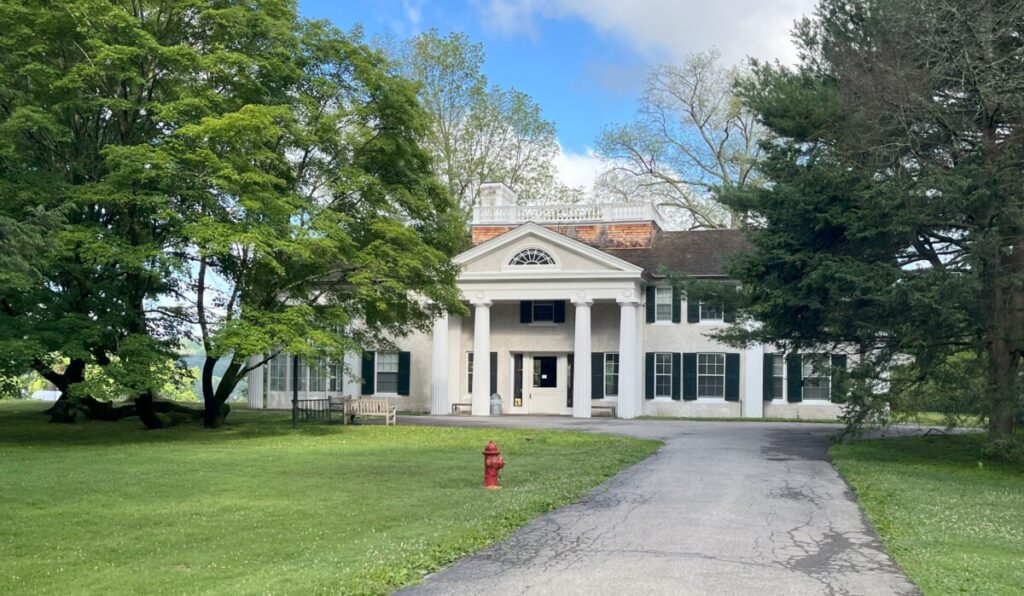
When Frederick Vanderbilt purchased the property in 1895, he and his wife Louise designed plans for an opulent mansion that would take several years to complete. However, in just over two months, they built this smaller property (seven bedrooms) as a temporary abode so they could monitor the mansion’s progress. The couple moved into the mansion upon its completion in 1899 and the Pavilion served as a “Bachelors Quarters.” Back then, it wasn’t appropriate for single males to stay in the house with single women.
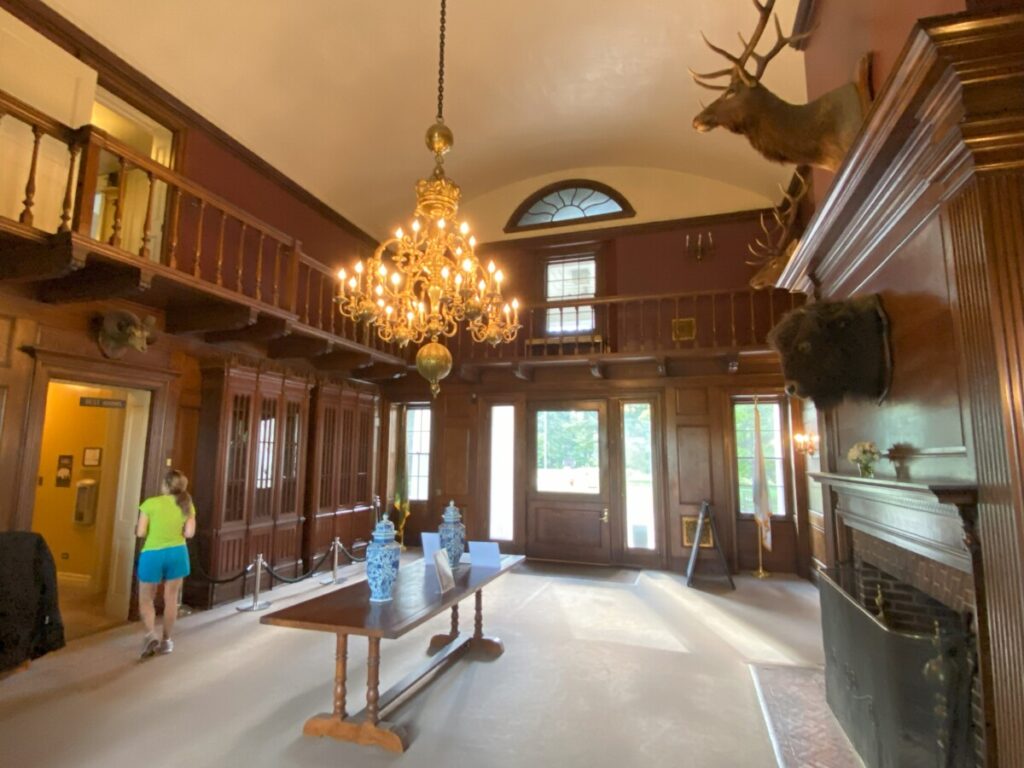
Inside the Pavilion, a two-story oak-paneled entrance hall welcomed us. Sporting trophies lined the wall, and a stuffed elk head hung above the grand fireplace. In another room, a Vanderbilt family tree visually described the descendants of Commodore Cornelius Vanderbilt (1794-1877), the wealthy shipping and railroad magnate. He left most of his estate to his son William and four grandsons – Cornelius (the Breakers in Newport), William Kisson (Marble House in Newport, RI), George (the Biltmore in Asheville, NC), and Frederick (owner of this property – Vanderbilt Mansion).
Unfortunately, we didn’t get to tour the inside of the Mansion. The first tour began an hour after opening time and we had to be in Philadelphia for a tour of Independence Hall later that day.
Vanderbilt Mansion
Even though we couldn’t stay for the tour, park rangers encouraged us to walk around the grounds and mansion. The land once belonged to Dr. Samual Bard, George Washington’s physician. Later, John Jacob Astor purchased the property for his daughter Dorothea Astor Langdon. You can read a detailed history of the property from a 1942 National Park Service (NPS) booklet here.
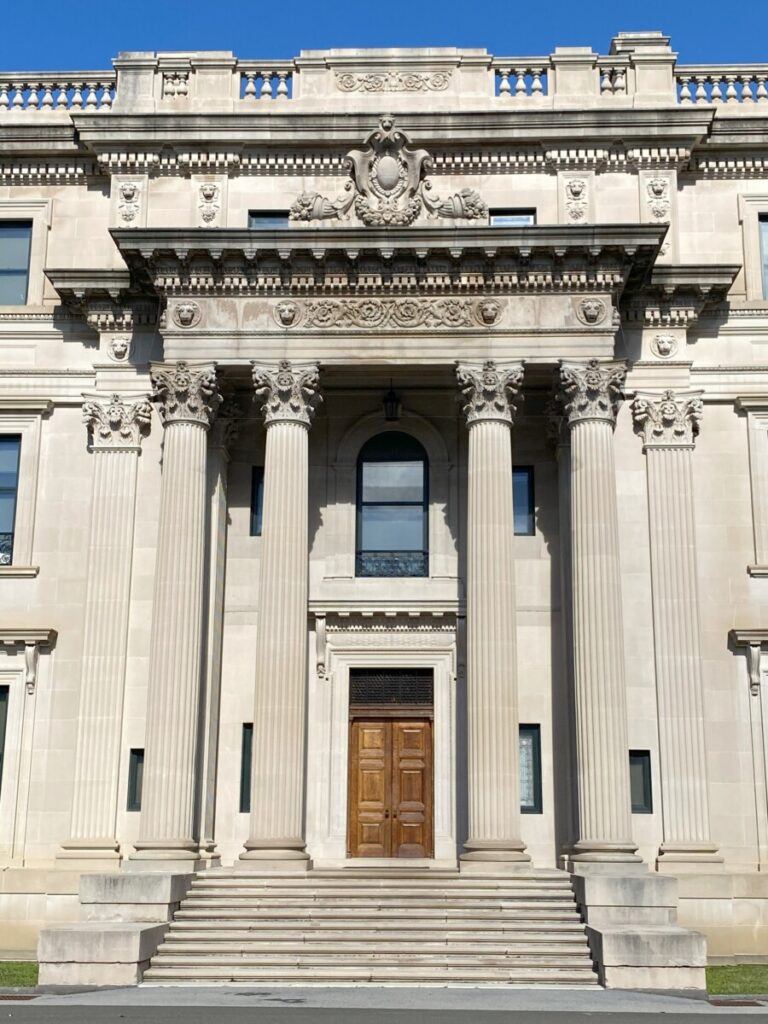
Many wealthy East Coast families owned multiple homes during the Gilded Age – and the bigger, the better. Frederick and Louise’s mansion was no different. The 54-room, limestone mansion cost $660,000 to build, roughly $25 million today.
We learned the Gold Room (patterned after a French salon), Library, Study, and Staircase surround an oval-shaped Central Hall featuring Italian marble, a fireplace, seating, and a double skylight. The large Drawing Room, measuring 50 x 30 feet, and Dining Room, with seating for 30 guests, flank the north and south sides of the Beaux-Arts structure.
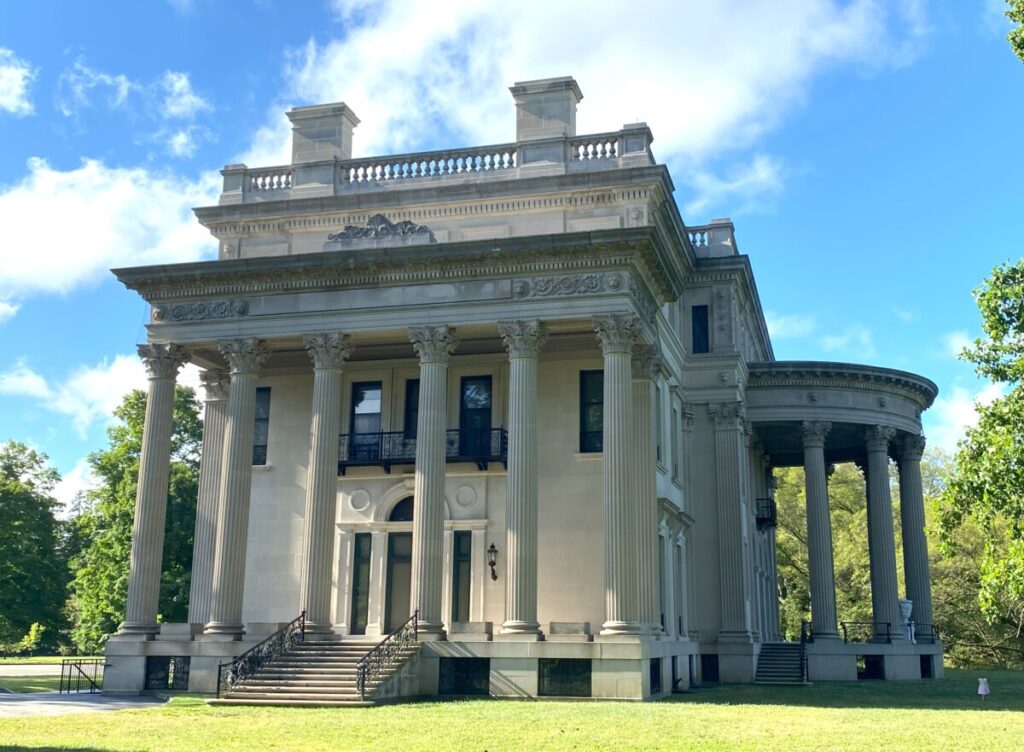
Upstairs, Frederick and Louise’s bedrooms are above the Drawing Room. Louise’s chamber is patterned after Marie Antoinnette’s Versailles bedroom. Supposedly, the rug alone weighs 2,300 pounds! The basement showcases the kitchen, laundry room, storage room, servants’ quarters, and wine cellar.
Louise passed away in 1926, followed by Frederick in 1938. Because they had no children, Frederick bequeathed the estate to his niece, Margaret “Daisy” Van Alen. Already a wealthy woman, she tried to sell the property to no avail. Her close friend, President Franklin D. Roosevelt, convinced her to donate the 211-acre property to the National Park Service in 1940.
Vanderbilt Gardens – Hyde Park
Continuing south of the Mansion, we came to the Formal Gardens. You know it’s a large spot when maps of the gardens are stationed at the entrance! Former owners landscaped gardens through the years. Later, Dorothea Astor Langdon’s son, Walter Jr., updated the gardens and added the Gardener’s Cottage and Toolhouse, the only two buildings on the entire property that Frederick Vanderbilt kept.
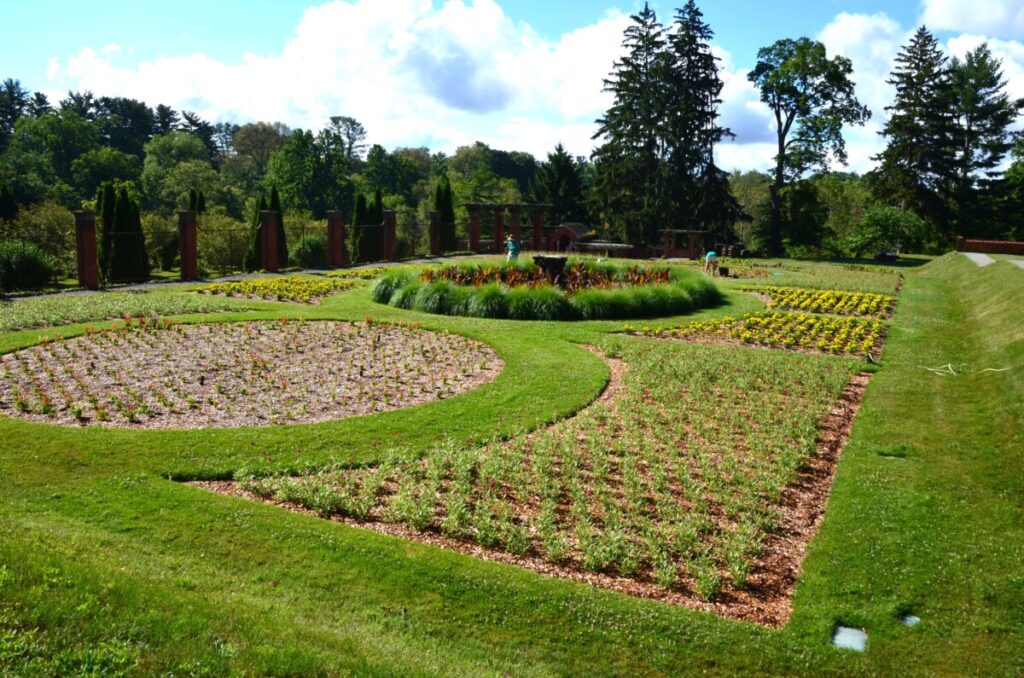
Frederick and Louise hired multiple landscape architects, most notably James Greenleaf, Thomas Meehan & Sons, and Robert Cridland. During the early 1900s, the Vanderbilts oversaw the installation of the Formal Gardens, including the Rose Garden, Annual Garden, Cherry Walk, and Reflecting Pool.

After the NPS took over the property, the 5-acre gardens were closed to the public and suffered neglect. However, in the 1970s, a grant restored the garden walls and structures. As interest in bringing the gardens to their 1930s appearance gained momentum, the Frederick W. Vanderbilt Garden Association was formed in 1984.
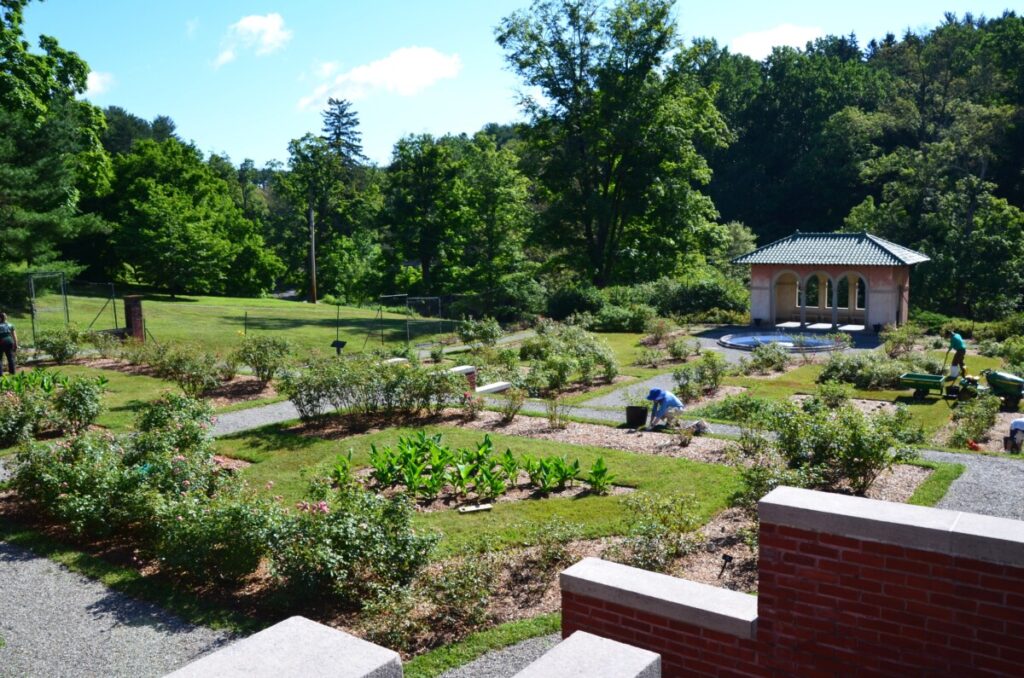
This group of volunteers has painstakingly replanted many species and maintains the grounds in conjunction with the NPS. We spotted multiple volunteers weeding and amending the soil in the hot sun. They use the toolshed as a headquarters and offer free 30-minute tours on select days.
Vanderbilt Grounds
A 2.5-mile loop winds around the Vanderbilt Estate. The trails are open from sunrise to sunset and allow leashed dogs. We walked a portion of the loop to explore Bard Rock. Departing north from the Pavilion, the trail offers views of the Catskill Mountains and the Hudson to the left. Because the path leads to a bridge crossing over the railroad tracks (the Vanderbilt family’s New York Central Railroad), it’s one of the best spots to get right next to the river. Picnic tables and a large bedrock area (Bard Rock) sit along the river’s edge.
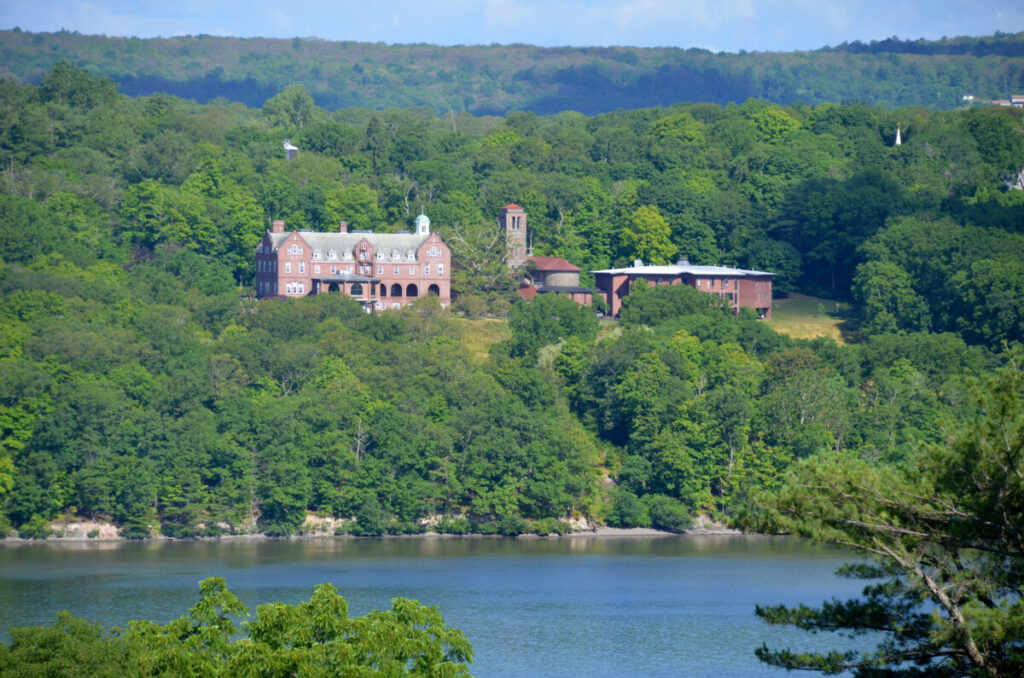
We backtracked the half-mile back to the Pavilion and parking lot. However, to continue the loop, visitors can continue the trail south to the Gate House before it loops back around past the Gardens, Mansion, and Pavilion. Click here for a trail map of the Vanderbilt Loop and other trails in Hyde Park.
Town of Rhinebeck on the Hudson River Valley
The previous evening, our original plan was to eat dinner in Beacon, just south of Poughkeepsie. However, the hotel staff suggested we go north to Rhinebeck instead since it was closer. The town was beautiful yet laid-back, and we found a delicious Italian restaurant to dine al fresco.
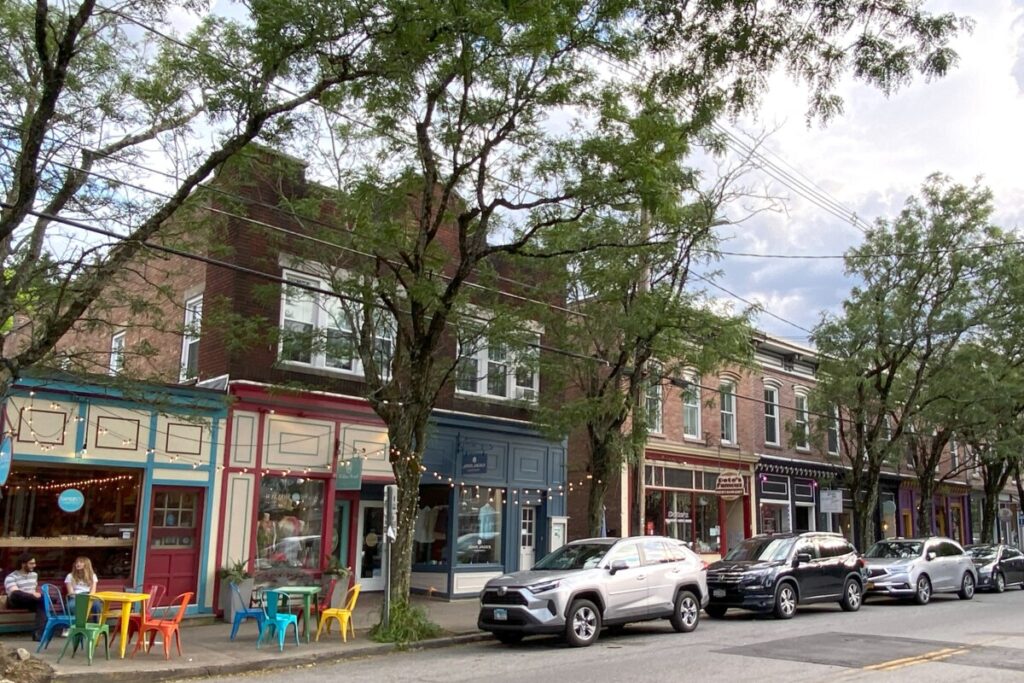
The town began in the late 1680s when the Dutch settled the area. The Beekman Arms is steeped in history as the country’s oldest inn. We took a quick peek inside and saw the original wood floors, a fireplace in the lobby, and a line of people waiting to be seated in the famous, low-ceilinged tavern.
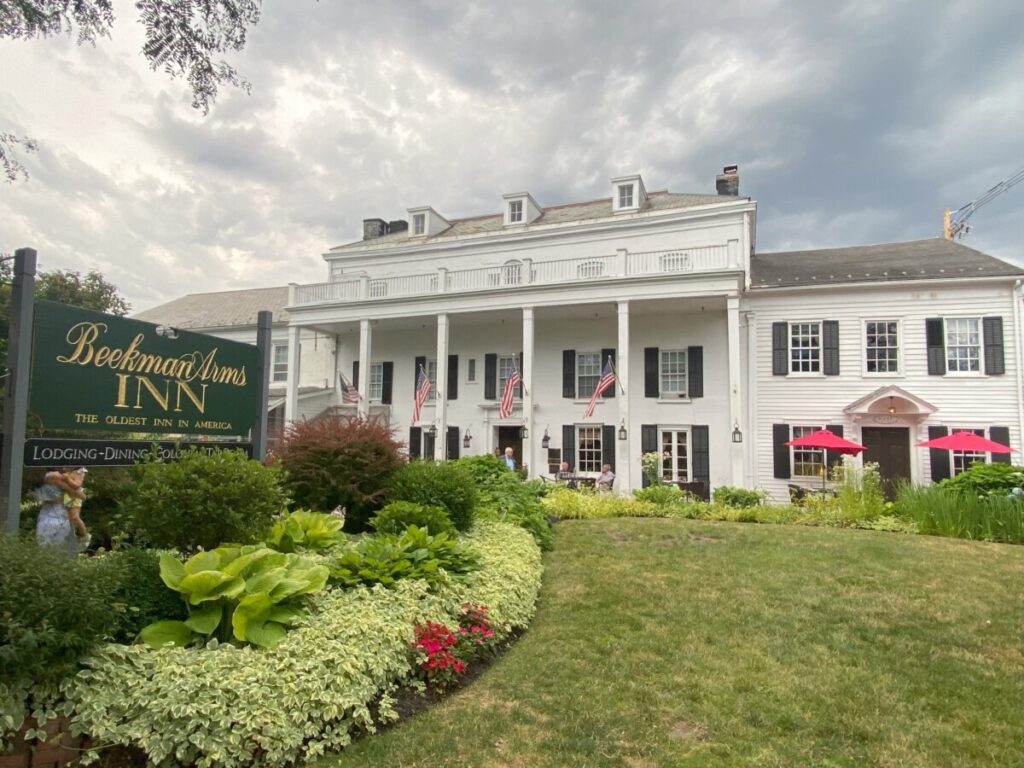
Originally built as Traphagen Tavern in 1704, the owners added an inn in 1766 – and even George Washington stayed there. Many historians believe the seeds of the argument between Aaron Burr and Alexander Hamilton, which ended with Hamilton’s death in a duel, began right here.
Conclusion
Vanderbilt Mansion National Historic Site is worth a stop if you’re in the Hyde Park/Rhinebeck area. Better yet, try to arrive when you can take the 45-minute guided tour of the inside. For more information, click here.
Exploring the Hudson River Valley in full could take several days to weeks. The Hudson River Valley National Heritage Area comprises ten counties and 250 towns. Each of the small communities exudes its own vibe.
In the Middle Hudson Valley, I’ve mentioned Hyde Park and Rhinebeck. But, New Paltz had more of a hippie feel, while Beacon felt artsy, an influence of Dio Beacon and numerous art galleries along Main Street. Poughkeepsie offers Walkway over the Hudson, a pedestrian bridge with a bird’ s-eye view of the Hudson River. Click here for an excellent resource for the entire Hudson River Valley.
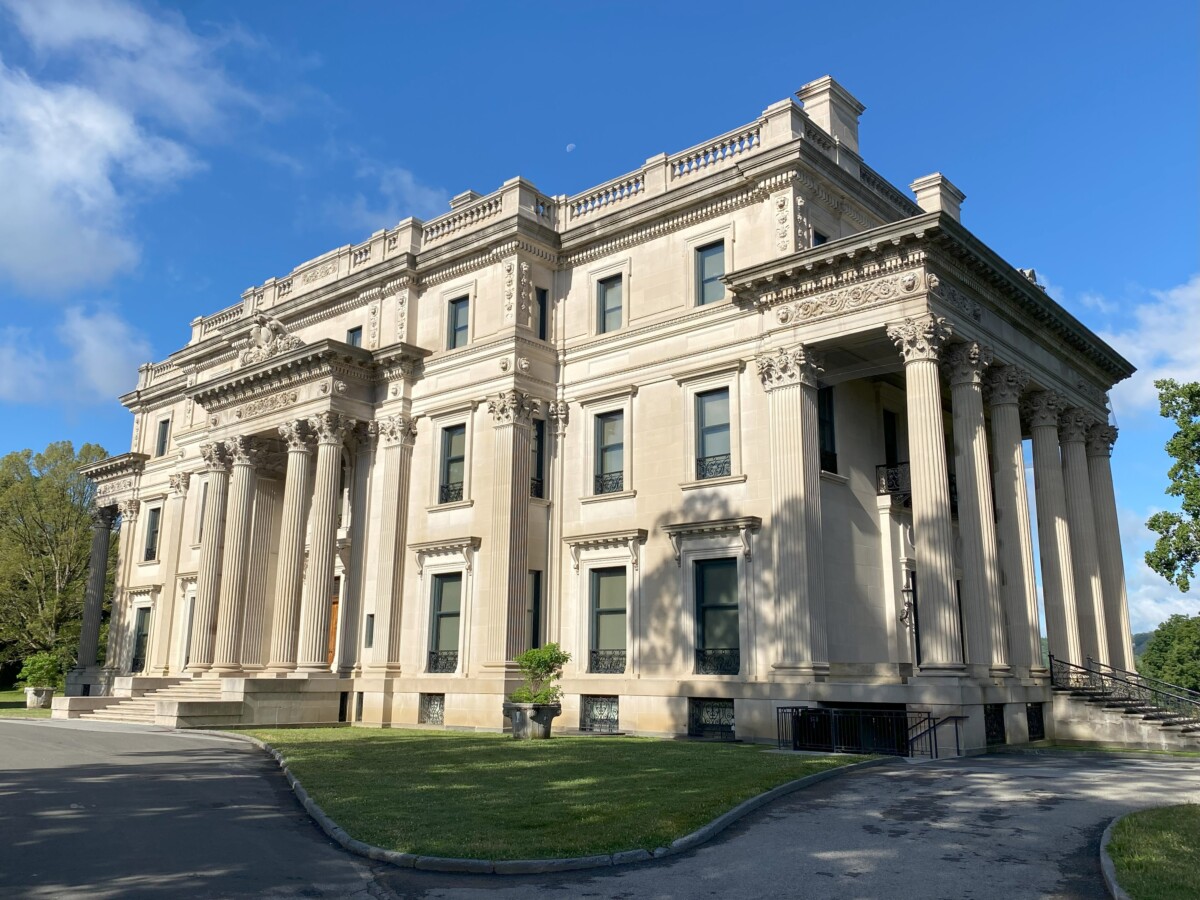
Pingback: Niagara Falls and Finger Lakes of New York Itinerary • Finding Family Adventures